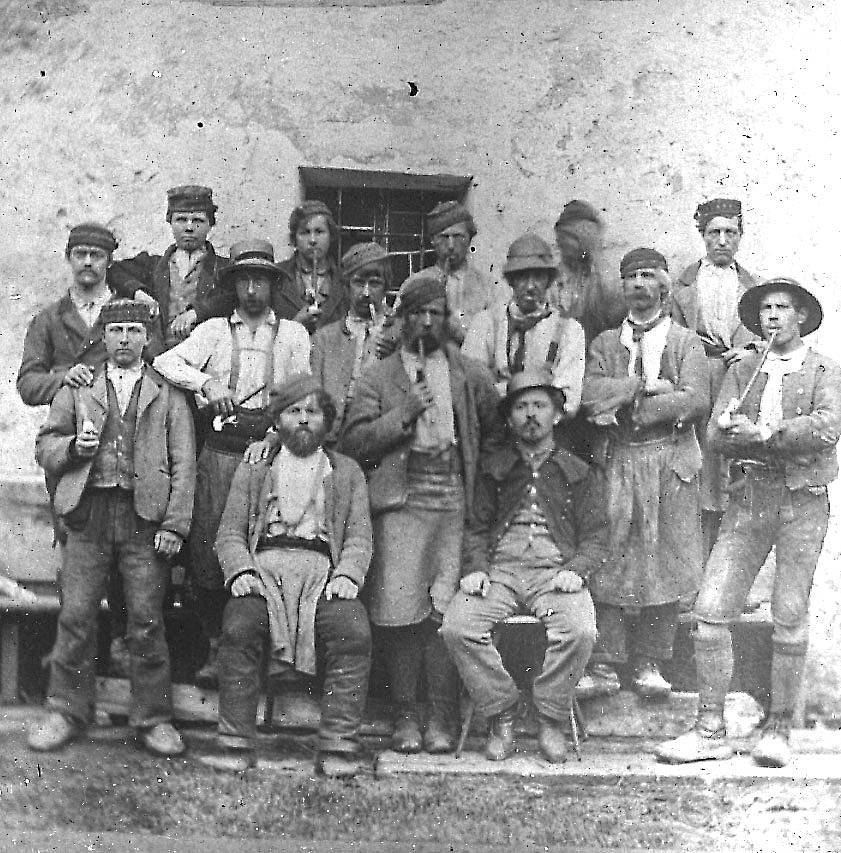Rauris Valley is one of the few continuously settled Tauern valleys and was for centuries regarded as a center of gold mining. As a consequence, Rauris Valley – along with Kolm Saigurn valley head and Seidlwinkltal – is able to look back on a long and fascinating history.
Various finds show that the mountain routes across the Rauriser Tauern (Hochtor) were traveled even in earliest times. These include a massive gilded neck ring at the Maschlalm in Seidlwinkltal from the La Tène period ca. 400 B.C. A copy of this piece is on display at the Valley Museum in Rauris.
Settlement of the valley spread from south to north. Today’s town of Rauris was previously named after the Gaisbach, upon whose alluvial fan it was built, and was first chronicled back in the year 1120. The name “Gaisbach” itself probably originated with the fact that stream flowed into the main valley between steep, narrow rock faces where goats would graze (“Geiss” is a she-goat, “Bach” a stream).
In 1122, when Bishop Heinrich von Freising transferred two estates to his brother Count Friedrich von Peilstein, the name "Rurise" appears for the first time with reference to the entire valley .
The most shaping influence on the valley came from gold mining, of course, which reached its height in the 15th and 16th centuries. At that time, around 3,000 people lived in Rauris Valley, with 450 mines in operation.
| 3rd / 4th century B.C. | Celts migrate from the Near East and begin mining for gold. They are known as the Taurisker. |
| 15 B.C. | The Romans conquer our lands and take over gold mining from the Taurisker, whom they use as labor. With their knowledge and equipment, the Romans create a boom in gold mining. |
| 719 A.D. | The Slavs have driven out the Romans and now re-commence gold mining. They found Kolm Saigurn. |
| 8th – 10th cent. | Control of gold mining now falls under the Franks and Bajuwarii. |
| 1122 A.D. | When Bishop Hinrich von Freising grants two estates in RURESE to his brother in 1122, the valley is officially chronicled. |
| 13th cent. | Settlement begins in the town we now know as Rauris. |
| 1460 - 1560 A.D. | The heyday of gold mining. Salzburg has the richest ore reserves in all of Europe. Rauris Valley is the center of gold mining in Salzburg. Throughout Rauris Valley, there is evidence of a broad mining infrastructure. In the year 1500 around 3,000 people live in Rauris Valley. |
| 1551 A.D. | Gaissbach (today’s Rauris) becomes a market town. The Rauris coat-of-arms features a white goat (Gaissbach) and crossed miner’s hammers. |
| 16th / 17th / 18th cent. | Mining declines significantly. Protestants are compelled to leave their homeland due to an expulsion edict issued by Archbishop Firmian, the glaciers expand. |
| 1832 - 1834 | The first lift to transport ore is built in Kolm Saigurn. The lift runs from a power house down to Kolm. At the side of the power house is a giant wheel driven by a glacial stream. |
| 1844 | Ignaz Rojacher is born. |
| 1853 | Wilhelm Ritter von Arlt is born in Prague. |
| 1880 | Ignaz Rojacher buys the mine. In 1888, Rojacher becomes postmaster in Rauris Valley, he gives up gold mining and sells the mine to a French company. However, as a result of inadequate yield, this company is forced to cease mining for gold. Rojacher dies in 1891. |
| 1886 | Sonnblick Observatory is built. |
| 1967 | Ulli Maier, ski racer, is born in Rauris. In 1989 in Vail and in 1991 in Saalbach, she is crowned World Champion in the Super-G. |
| 1971 | The first “Rauris Literature Days” takes place. |
| 1986 | The Gold-Panning World Championships are held in Rauris. |
Would you like to learn more about the history of Rauris Valley? In the 14 rooms of the Valley Museum visitors are told how the first skis came to Rauris, how gold mining shaped Rauris Valley, and how Europe’s highest permanent weather station was created.
In the tourist office, you can obtain books about the history of Rauris Valley as well as its old houses – our team will be happy to assist. .
